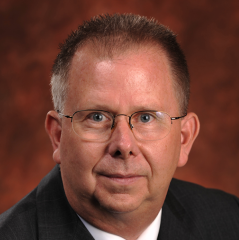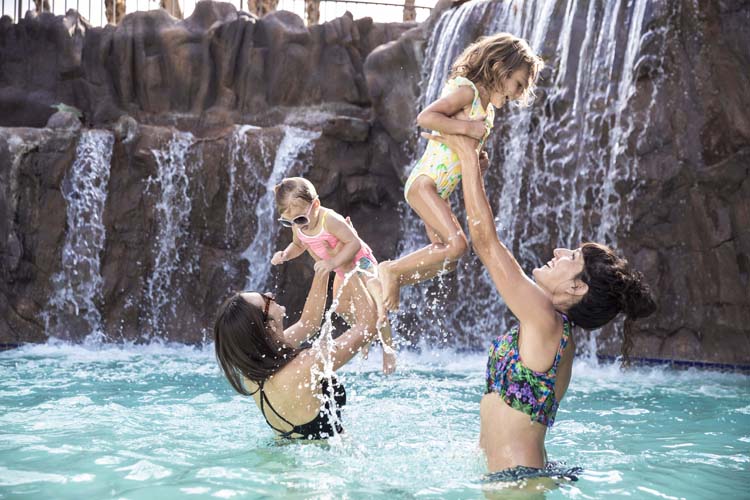Although metro Phoenix may not always be a top destination during Arizona’s hot summer months, cooler destinations in the state are — like the Grand Canyon, ranked third by U.S. News and World Report’s “Best Family Summer Vacations” list.
But despite the Valley’s high temperatures, the appeal of traveling and enjoying leisure activities and entertainment around the state exists and contributes to the state’s overall tourism tax revenue. In 2019, prior to the pandemic, Arizona’s estimated tax revenue from lodging, restaurants and bars, retail and amusement was well over $67 million in June alone, according to the Arizona Office of Tourism. So what’s Arizona’s summer economic forecast for 2021 after a cautious pandemic year?
READ ALSO: 15 must-see places for an Arizona road trip
To answer those questions, ASU News spoke to Dennis Hoffman, professor in the Department of Economics at the W. P. Carey School of Business and the director of the L. William Seidman Research Institute, and Nicholas Wise, assistant professor in the School of Community Resources and Development in the Watts College of Public Service and Community Solutions, about what it will take for Arizona’s tourism industry to bounce back.
Question: As COVID-19 guidelines ease up, will there be a stronger demand for summer travel this year, and will Arizona start seeing an economic rebound?

Hoffman: Travel is picking up around the nation, but the impact for this summer in Arizona remains a bit cloudy compared with last summer. While the pandemic dampened Arizona resident travel, it is likely that a higher share of Arizona resident travelers stayed in the state rather than California, the typical summer destination.
Historically, Arizona slows significantly during the summer months as folks travel out of state or simply stay home and avoid the heat. I expect this summer will be closer to normal but perhaps not quite normal. Historically, the winter and spring months are most important for tourist-generated tax revenues. The stimulus money paid in the spring may help boost spending this summer, but I expect a below-average year for folks traveling from out of state/country to the Grand Canyon. Look to summer 2022 for essentially a full return to normal.
Q: How long will the hospitality and travel industry continue practicing COVID-19 safety practices? Do you think those practices will encourage tourism?
Wise: While the mask mandate has been relaxed and public health experts are advising it is safe to no longer wear a mask indoors if you are fully vaccinated, this does not apply to transportation. Because the travel and hospitality industries see people gathered in close proximity, it is expected that wearing a mask at airports and during flights will continue at least until the 13th of September this year, according to the TSA. The same applies to public transport, and it is safe practice to wear a mask in taxis or shared van shuttles, as this is how many people will likely travel from the airport to their hotel.
With tourism and hospitality, you interact with people from across the country and world, and policies can be vastly different, depending on where someone is from. It seems that each company is setting guidelines and continuing COVID safety practices to ensure everyone feels safe on their terms, but a challenge is balancing this with what consumers want, demand and desire. Consumers may see the vaccine as a quick solution to returning to travel and may make plans, but I think that consumers will also be aware that hotels and restaurants in the destinations they visit are looking out for their safety. I don’t think this will deter tourism, but will encourage it because continued safety practices for many might be that peace of mind they are looking for as they look to get out and visit new places again. But we should keep in mind that different companies have different policies and practices.
Q: The hospitality industry has been struggling to find workers. Will this impact the possibility of an economic rebound this summer?
Hoffman: The challenge with employment in hospitality will not likely become severe until fall and winter when the seasonal tourist season kicks into full swing. Hospitality businesses did struggle a bit this spring with finding help. People continue to be hesitant working in people-facing businesses. Child care costs are also a concern. And it is likely that a significant share of hospitality workers are undocumented. That adds another friction. I sense also that people are reassessing their chosen occupational pursuits, considering job switching, retraining, etc.

Wise: Many of the most vulnerable in our society who prior to the pandemic had worked in lower-wage jobs in the tourism and hospitality industries saw jobs cut as businesses needed to save money and preserve finances. Not everyone had the opportunity to use this past year to up-skill or go back to college or university. This damaging decline put families working hourly paid jobs in a difficult situation without opportunity or financial resources to invest in training or education, or use any savings to invest in a business to capitalize on in the future.
This is a time to reflect on the social inequalities and work to set policies that focus on equity and justice to ensure opportunities for local communities and not just corporate businesses. As jobs come back in demand, tourism numbers grow, profits are achieved again — what is supporting this growth is a labor force that keeps these companies and industries moving forward to meet consumer demand.
Q: What type of travel incentives will tourists likely see from hotels, airlines and other businesses?
Wise: The tourism and hospitality industries were some of the hardest-hit industries, and several airlines extended their frequent flier awards a year so that the consumer would not lose out on their loyalty benefits. It can be difficult for a company to offer a lot of incentives due to financial losses in 2020 into 2021. Consumers recognize this, and as travel opens up more and more, what companies can do is provide that sense of welcoming back to consumers. Demand is increasing, so this can bring new opportunities once again for businesses in the destination. I think businesses in the destinations will offer incentives — because they want to attract new and existing clientele back to their service offering. For airlines and hotels, it is the chance to resume their services as they are central to how we get somewhere and then we need to stay somewhere.
Q: How will the demand for domestic tourism compare with international tourism?
Wise: There have been limited flights internationally since the pandemic. This means that prices to fly internationally might not be as competitive. As the airlines look at search trends and determine where people want to go, they will likely then respond by expanding service offerings. At the moment, I believe that initially domestic tourism will benefit in this recovery period due to regularly scheduled services that were maintained through the pandemic. As airlines increase international routes, this may spark more competition between airlines to cater to international tourism more in the future.
Q: How long will it take for Arizona to bounce back from the damaging tourism decline in 2020?
Wise: This is a difficult question, and time will tell. It will likely happen in different phases across the state based on a destination’s capacity to welcome back tourists. You could say we are seeing a bounce back already in parts of the Valley. For instance, it was reported in the news that there are now more restaurants open in Phoenix than pre-pandemic. The number of people passing through airport security to board flights has significantly increased since this time last year, looking at daily TSA passenger figures. We are still not at 2019 numbers, but increases over the past few months are certainly evident.
There is also a noticeable difference in the amount of people out in the city. It was reported that resorts in Scottsdale are seeing increased demand as people look to go out and travel again, with some resorts reaching 90% capacity over recent weekends. Times of decline are times to really strategize, and we see this with new hotels being constructed during the pandemic. These projects create and maintain jobs in the construction industry, the same with planning new restaurants and fixing up the spaces, as these business owners or investors are planning for the right time to open.
Hoffman: There is every reason to believe that spring 2022 will see tourism numbers back to 2019 levels. This will be welcome to industry participants and will set the stage for future growth trends that match pre-pandemic levels. But any indication that the virus is making a comeback or that vaccines are becoming less effective will stifle growth in this area significantly. But with each passing month, pandemic memories should fade and preferences for travel should reemerge.




